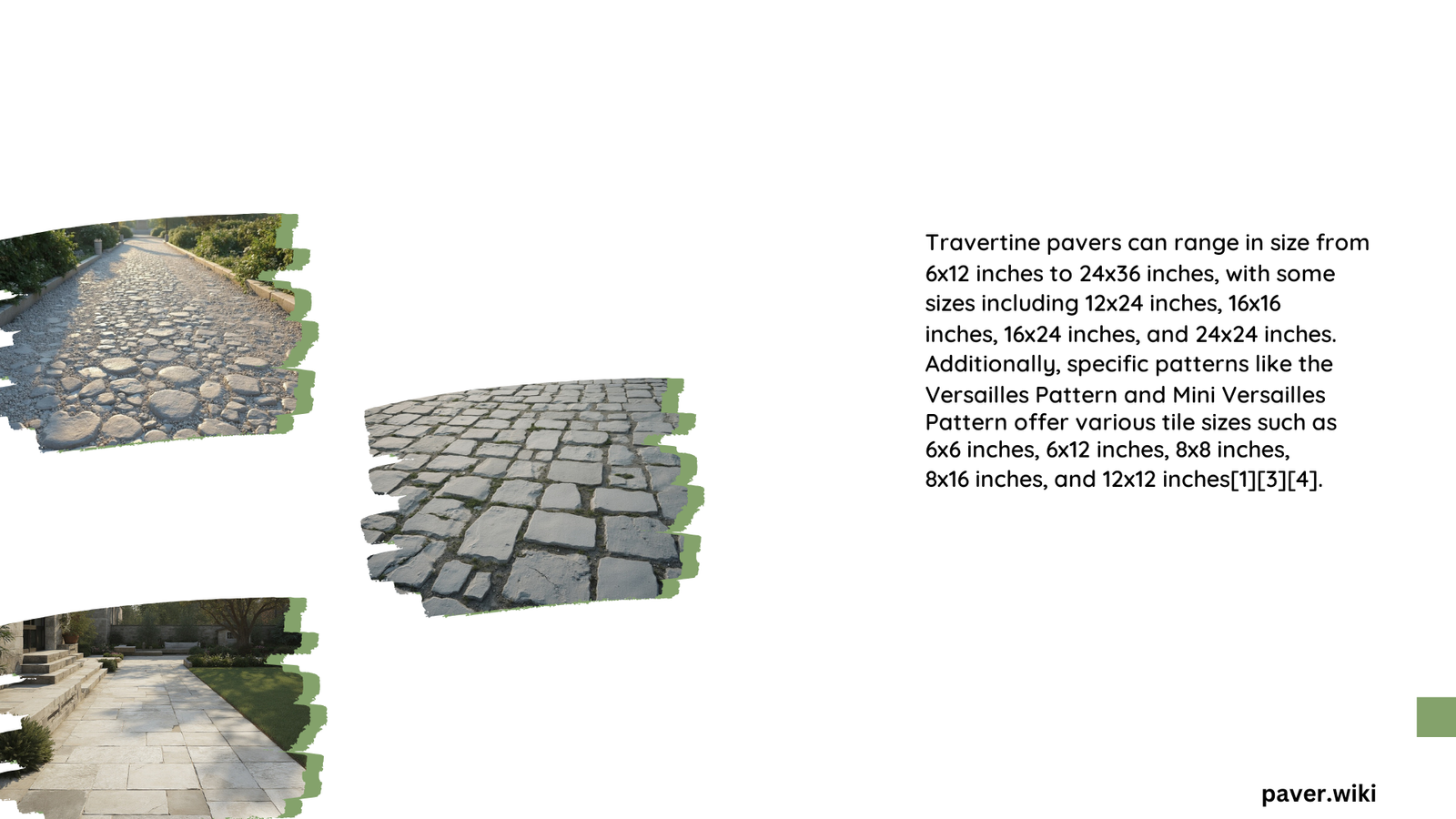Travertine pavers offer versatile sizing options for homeowners and contractors seeking elegant outdoor flooring solutions. These natural stone pavers range from compact 12×12 inch tiles to expansive 24×36 inch surfaces, providing flexibility in design and application. Understanding the precise dimensions, thickness variations, and installation considerations is crucial for selecting the perfect travertine paver for your specific project needs.
What Are the Maximum Dimensions of Travertine Pavers?
Travertine pavers come in a diverse range of sizes, accommodating various architectural and landscaping requirements. The standard size spectrum includes:
Dimensional Ranges
- Minimum Size: 12″ x 12″
- Maximum Size: 24″ x 36″
- Most Common Sizes:
- 16″ x 16″
- 16″ x 24″
- 24″ x 24″
Thickness Specifications
| Thickness Range | Typical Application |
|---|---|
| 0.5″ – 1″ | Light residential use |
| 1.25″ – 1.5″ | Standard patio installations |
| 2″ – 2.5″ | Heavy-duty areas, pool copings |
What Factors Influence Travertine Paver Size Selection?

Several critical factors determine the appropriate paver dimensions:
- Installation Location
- Patios require different sizing compared to pool decks
- Walkways need more compact dimensions
-
Large outdoor entertainment areas can accommodate bigger pavers
-
Weight Considerations
- Larger pavers (24″ x 36″) can weigh significantly more
- Transportation and manual handling become challenging
-
Specialized equipment might be necessary for installation
-
Design Aesthetics
- Smaller pavers create intricate, detailed patterns
- Larger pavers offer a more modern, minimalist appearance
- French Pattern sets provide mixed-size configurations
How Do Custom Sizing Options Work?
While standard sizes dominate the market, custom travertine paver options exist:
- Custom Length Ranges: 6″ to 72″
- Specialized Coping Materials: 2″ thick variants
- Bespoke Sizing: Manufacturers can produce non-standard dimensions upon request
Installation Complexity Factors
- Larger pavers require more precise base preparation
- Thicker pavers (2″+) demand robust foundational support
- Professional installation recommended for non-standard sizes
What Are the Practical Limitations of Large Travertine Pavers?
Physical Constraints
- Weight: A 24″ x 36″ paver can be extremely heavy
- Handling: Requires multiple workers or mechanical assistance
- Transportation: Specialized equipment might be necessary
Cost Implications
- Custom or oversized pavers typically cost more
- Additional labor for installation increases overall project expense
- Material waste potential with non-standard sizes
Recommended Paver Size Selection Strategy
- Measure your specific project area
- Consider aesthetic preferences
- Evaluate load-bearing requirements
- Consult with professional installers
- Request material samples before final purchase
Pro Tips for Travertine Paver Sizing
- Always account for grout line spacing
- Consider future maintenance accessibility
- Balance between visual appeal and practical functionality
- Verify structural support for larger paver installations
Note: Precise measurements and professional consultation are crucial for successful travertine paver projects.
